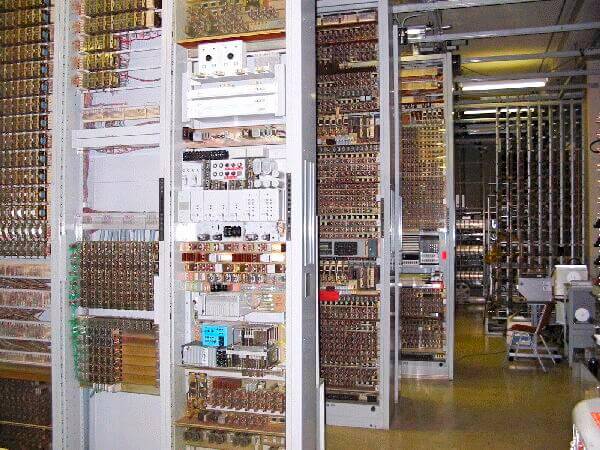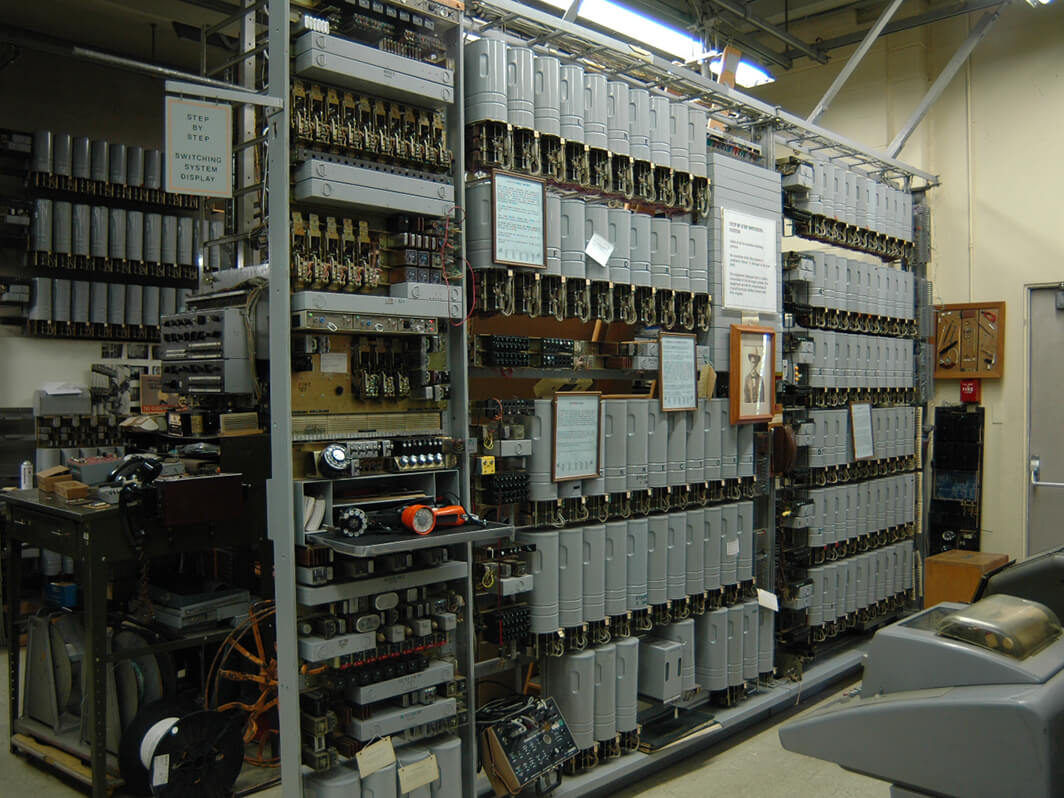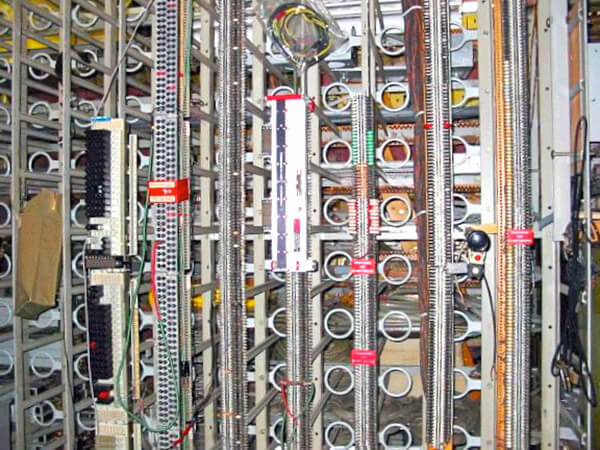The Connections Museum Seattle boasts an extensive collection of mechanical switching equipment. See below for more information about our Seattle exhibits.
Mechanical Switching
The Connections Museum Seattle - Mechanical Switching
In almost every neighborhood there is a windowless building that houses the switching equipment that connects your telephone to your neighbor’s telephone, or routes your call to another central office for long distance calls. This building is called the central office. The museum features six different telephone switching machines that were once located in central offices throughout the Seattle area. Each machine is functional, and visitors can watch as telephone calls are placed in real-time!
Master Test Frames for No. 1 and No. 5 Crossbar Switch
The master test frame uses relays to test other frame circuits. Today the equipment is computerized and uses digital components. Our modern computers are direct descendants of the switches developed for telephone circuits.
#5 Crossbar
The partial view of the No. 5 Crossbar pictured on the left shows several frames one behind the other. Our “5XB” (as it is sometimes known) came from the Adams central office on Mercer Island, WA. It was installed in the late 1950s, and served until the early 1980s when it was moved to the museum. Visitors can place calls through the system, and walk down the aisles of equipment.
Panel Final Frame
The picture to the left is a close up of a panel final frame and shows a terminal bank, selector rods, and the rotary sequence switches that are unique to the panel office. The rods are driven by electric motors and clutches and move up and down to make connections. On the right side of this photograph, sequence switches control the operation of the rods.
Our panel switch was installed in Seattle’s Rainier (later renamed “Parkway”) central office in March 1923, and retired in December 1974. It is the only panel switch left in the world, and it still works!
Community Dial Office
This community dial office utilizes Strowger type switches, manufactured by Western Electric. The rotary switches had contacts that were 10 switches high each with 10 positions. Pulses created from the subscriber’s rotary dial cause the switches to rotate and connect the call in a step-by-step fashion as each digit is dialed. The Strowger equipment shown was originally installed in Crystal Mountain, Sumner and Belfair, Washington. Pieces of equipment were assembled to create this working display.





